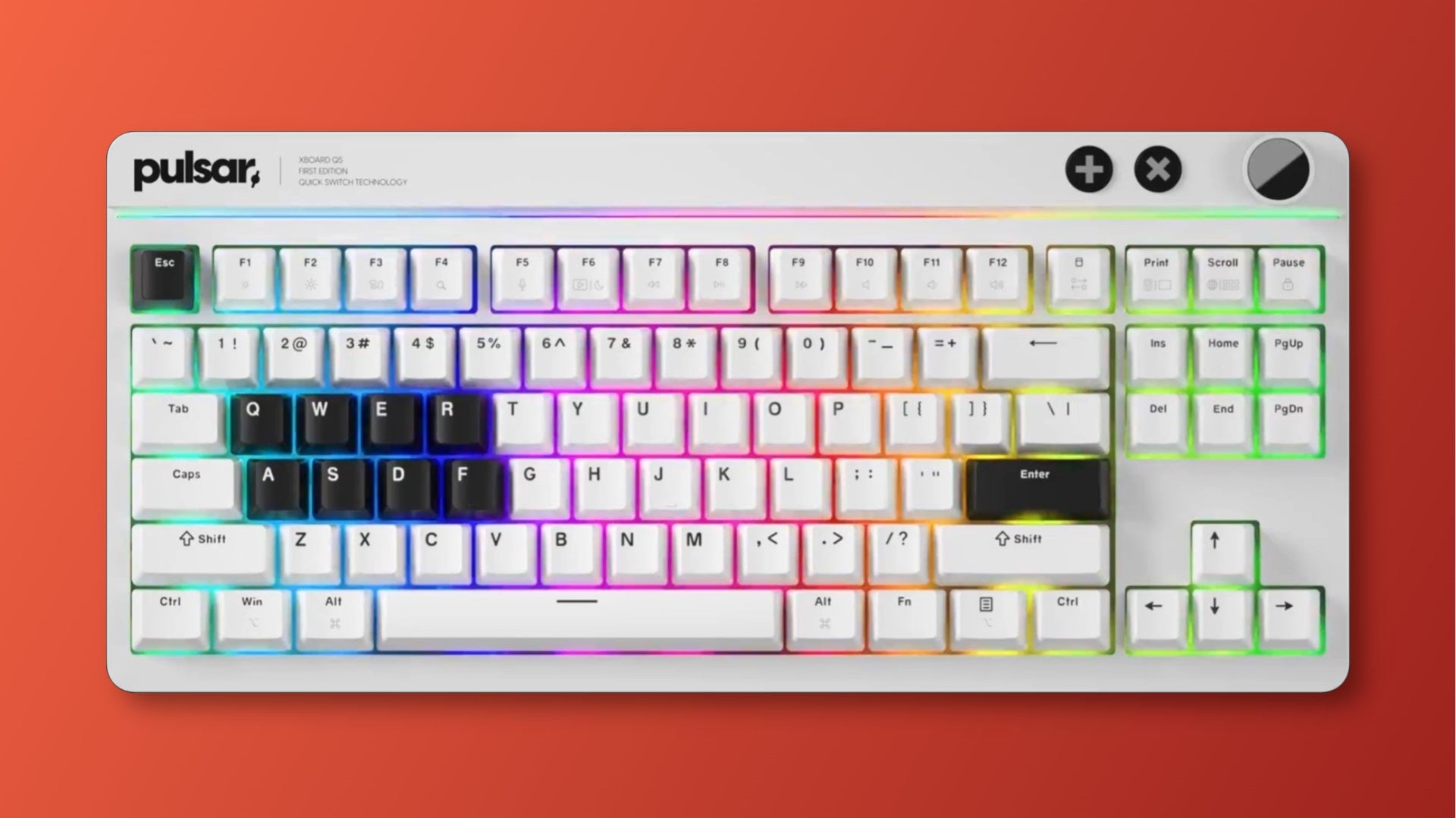The goal of Sony’s PlayStation Pulse Explore wireless earbuds can be distilled down to two features: high-quality detailed audio and a plug-and-play setup. Clearly, Sony wanted these earbuds to stand out from its rather extensive line of wireless headphone products in a way that was more than the avant-garde design these little buds employ.
These earbuds deliver audio through a type of driver known as a planar magnetic – a specialty of Sony’s recently acquired Audeze – that are lauded for their ability to reproduce sound with extreme detail and clarity. But while we might get that exceptional level of detail, we had to give up a lot in exchange in order to meet the $200 price that Sony wanted to hit.
PlayStation Pulse Wireless Earbuds – Design and Build
I called the buds “little” earlier, but that is actually a bit of a misnomer since the Pulse earbuds are actually quite large by modern standards. When viewed from the side, they don’t look that much taller than Sony’s InZone wireless earbuds or even something more ubiquitous like Apple’s AirPods Pro, but it’s the overall girth that feels clunky both in the hand and in the ear.
These are thick, beefy earbuds that have an odd weight distribution that puts half the bud above the point it rests in your ear canal, which can put a lot of pressure on the bottom of your canal and concha. I spoke to a few others who had some time with the Pulse buds and while they didn’t necessarily have a direct complaint about the weight, they did agree that they could see it being an issue depending on your ear size and shape.
I have small ears and canals, and I always end up using the smallest eartip a company includes with earbuds and that was no different here with the Pulse earbuds. Sony provides four total tip sizes – which is a great number of options, for what it’s worth – but no matter which I used and how I positioned the Pulse earbuds, they were always just a little uncomfortable for me.

I noticed irritation after just a few minutes. By contrast, I can wear the InZone earbuds or Apple’s AirPods Pro for hours without suffering any fatigue.
Size and comfort aside, I really like how these buds look when worn. The two-tone, swooped design looks excellent. I also appreciate that volume control can be accessed from either earbud by a physical button rocker on the top of each. When gaming, I don’t want to be fumbling around with touch controls, so I appreciate the physical controls.
On the bottom of each bud is a PlayStation Link button, which toggles the connection among PlayStation Link-enabled devices. More on that later.
Since this is a PlayStation 5 device, the charging case can’t look pedestrian either, right? Well, it doesn’t, but again I really like it. It almost looks like a mini PlayStation 5 with its white rounded plastic swooping over a black interior. That white case slides open (in a really satisfying manner, for what it’s worth) to reveal the charging points for the buds as well as another Link button that doubles as the way to start Bluetooth connections.
The charging case is quite large, though. Sure, it’s going to fit into most pockets (well, men’s-style pant pockets anyway) but it’s more than twice as large as an AirPods Pro charging case and one and a half times as big as the InZone buds case. Yeah, the Pulse earbuds are larger and the design is cool, but this case is almost comically big when compared to the current market.

The last note I want to make here is on battery life, which isn’t bad, but also is not very good. The buds promise five hours of battery life per charge and two more full charges from the case for a total of 15 hours. In comparison, the InZone buds promise 12 hours of life per charge and 24 more hours in the case. While Sony touts the latter as “industry-leading,” it does illustrate the massive divide between the performance of these two Sony products.
Five hours wouldn’t be terrible if I could continue to charge them while wearing them, but that’s not feasible with earbuds like it is with a wireless headset. That limit puts a cap on how long a single session can go for and while five hours is probably enough, I do wish it was at least eight.
Also of note, while the buds do display their battery life when they are first connected to the PlayStation 5, they don’t show it in the Accessories section of the menu. While battery is displayed for the controller, not being able to see how much juice is left on the buds while gaming leaves me constantly afraid they’re about to run out.
PlayStation Pulse Wireless Earbuds – Linked Up
The Pulse wireless earbuds are one of two PlayStation products that support the company’s new Link system; the other is Sony’s Pulse Elite wireless headset. Rather than relying on open WiFi connections or Bluetooth, Sony has created a new wireless protocol called Link that promises an extremely fast, lossless audio connection as long as both ends of the connection support Link.
The only gaming device that has Link built-in is the new PlayStation Portal, and that will work with the Pulse wireless buds and Pulse Elite headset right out of the box, no other pieces of hardware necessary. For anything else, the PlayStation 5 included, you’ll need to plug in the included Link USB adapter. Once attached, though, that Link connection is created and the buds and attached device immediately work together.

It works with a wide range of devices, including Apple computers and PCs.
If you don’t want to use Link, that’s fine, too, since the Pulse earbuds support Bluetooth (although it’s not clear on Sony’s website which generation they’re using).
If you think Link is the only way to enjoy these headphones to their utmost, I’m happy to report that Bluetooth support on these buds is actually outstanding. They have Multipoint, which means they can be connected to multiple devices simultaneously without needing to unpair and re-pair every time. I can very easily swap audio between my Mac and my iPhone, for example. It’s not instantaneous or automatic like it is with AirPods, but you can do it.
Even better, the Pulse earbuds are able to hold a connection with a Link and Bluetooth simultaneously. That means I can play a game like Apex Legends or Risk of Rain 2 on my PlayStation and chat with my friends in a PlayStation Party chat while also accepting a phone call without losing the audio connection to either. And yes, my audio was sent to both devices, too.
I was actually able to scroll through Instagram Reels and hear the audio while also hearing the queue music from Apex and my friends chatting all at the same time.
This isn’t a new interaction, of course. It’s been done by other audio brands before, but it’s really nice to see it in play here and it’s far from commonplace – especially when it comes to earbuds meant specifically for gaming.
PlayStation Pulse Wireless Earbuds – Audio Quality
What really matters most for audio equipment designed for gaming is how good they are at conveying the sound of a game to me and how good I sound to those in a party chat. Gaming is, at least for me, a very social endeavor and I go out of my way to make sure I sound as good as I can to my friends.
First, let’s talk about how games sound through these earbuds: it’s fantastic. As mentioned, Sony is using planar magnetic drivers in the Pulse earbuds and the result is a sound quality that has some of the best detail reproduction I’ve ever heard out of any earbud. I played Destiny 2, Apex Legends, and Risk of Rain 2 while wearing these buds and I was hearing sounds I’d never heard properly rendered before – I’ve been playing some of these games weekly for years, and hearing something new was definitely not something I expected.

The Pulse earbuds lean heavily on detail reproduction and provide a nice deep bass that’s not so deep it will make your teeth rattle, but enough that environments sound like they are coming at you from a very high-quality movie theater. It probably helps that I turned on 3D audio which provided excellent pinpoint directionality that the buds were able to expertly translate to me.
Where the buds don’t do as well is with music, which has a very unbalanced quality to it. While yes, detail is there as are lows, the rendition of vocal highs and all of the mids are lacking significantly. It’s hard to describe how odd it is to me to hear details in a voice but with weak highs – I can’t say it’s something I’ve encountered before. Whatever the case, turning on songs I’m very familiar with was an almost visceral experience that made me physically recoil in confusion. I am sure I could get used to the sound out of these buds, but Sony’s other music-focused headphones are far superior to these for that experience.
In short, they’re serviceable for music but I wouldn’t recommend them if that’s what you’re hoping to primarily enjoy with them.

I unfortunately don’t have better news when it comes to the quality of the microphone. While it’s what I would call “fine,” I am left disappointed. While my voice is clear and isolated quite well, the Pulse buds don’t seem to pick up any of the warmth or depth in my voice, leaving me sounding like I’m talking in a tiled room with no furniture – hollow. I have certainly heard better from other earbuds. The AirPods Pro sound downright exceptional by comparison, as do Sony’s own WF-1000XM5.
What I will say is that the “AI-enhanced noise rejection” that Sony touts on these actually does work. A friend of mine absolutely hates the sound of other people chewing food or drinking, so I tried that while wearing these earbuds without telling him to put the “trained to identify, isolate and remove unwanted noises” claim to the test.
He didn’t notice at all. Whatever magic Sony put into its algorithm to ignore sounds that aren’t a voice, it works.
PlayStation Pulse Wireless Earbuds – Other Features
If you were hoping to find a list of other exciting features these buds have to offer, I hate to disappoint, but this section is here mainly to explain what these buds don’t offer for $200. While I don’t like to judge a product based on its price, it’s hard not to think about it a little, especially when Sony makes another set of gaming earbuds that cost exactly the same. I’m talking, of course, about the InZone buds.
The Pulse earbuds don’t have active noise cancelation, transparency modes, or sidetone. I really miss sidetone because I don’t enjoy only hearing a muffled version of my own voice when I talk and I can’t tell if I’m yelling or not. The InZone buds have all three of these features and, as mentioned, have over twice the battery life. They are also smaller, lighter, and still come with a USB dongle to allow for direct connection via USB, but they also work with Bluetooth.
The Pulse earbuds don’t have any EQ management or associated software to customize them to fit your specific taste. This is especially weird since planar magnetic drivers are capable of adjusting to even the smallest changes. The InZone buds do have EQ control and can be customized in a variety of ways with Sony’s InZone software.
The Pulse earbuds don’t have quick charging. Sony doesn’t actually say how much the Pulse buds will recharge over how much time, but in contrast, the company does say that five minutes in the charging case will give the InZone buds an hour of listening time.
However, the InZone buds don’t have Bluetooth Multipoint and are bizarrely not compatible with Apple devices (I could not even get my Mac or iPhone to recognize them at all). You can get them to work if you use the dongle, however, but the fact Bluetooth is borked means you probably won’t be using them with your iPhone. The InZone buds also don’t support PlayStation Link.
Both sets of earbuds support 360-degree 3D audio and both are plug-and-play with the PlayStation 5, although the InZone buds have slightly less integration and don’t show up in the Accessories panel of the PlayStation 5 the same way first-party PlayStation devices do, but that doesn’t end up meaning much in the grand scheme of things.
PlayStation Pulse Wireless Earbuds – The Competition
Obviously, you’re going to want to consider the InZone buds since they offer some of the same functionality with a lot of other features, but they don’t work great with Apple devices and don’t have Bluetooth Multipoint. The Pulse buds do work great with Apple devices and do have Multipoint, but they lack noise canceling, sidetone, and transparency.
There really is not much else I feel comfortable recommending when it comes to wireless earbuds made specifically for gaming. Sure, they exist, but plug-and-play compatibility with PlayStation 5 is rare, so your options are quite limited.





